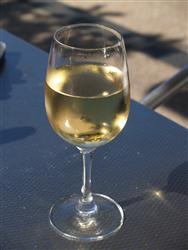Study Viticulture from home!
Ten lessons covering the history of viticulture, the current state of the industry, wine and table grapes, dried grapes, cultural practices (trellising, soils, planting, pruning, irrigation, pests & diseases); vineyard design, improving quality, harvest & post harvest procedures, wine making, marketing and much much more.
Course structure and content
To develop an ability to select and cultivate appropriate varieties of grapes in different situations, and provide the knowledge to make informed decisions about the management of a vineyard
Each lesson culminates in an assignment which is submitted to the school, marked by the school's tutors and returned to you with any relevant suggestions, comments, and if necessary, extra reading.
COURSE DURATION: 100 hours.
This course has 10 lessons:
 1. Introduction
1. Introduction
Describe the nature and scope of the Viticulture industry both locally and world wide.
Includes: global viticulture; major wine growing areas around the world; the grape; genera and species; root stocks; classification of grape varieties; table grapes; wine grapes; dried fruit; juice grapes; canned grapes.
2. Climate & Soils
Identify suitable climate and soil conditions for vineyard site establishment
Includes: temperature; temperature calculations; latitude-temperature index and degree days; sunlight; rainfall; soil; soil types and wine regions; understanding soils; texture; characteristics; soil structure; chemical characteristics of soils including pH and nutrient levels; understanding plant nutrition; soil water content; simple soil tests; naming the soil; problems with soil; erosion; salinity; structural decline; soil acidification; chemical residues.
3. Selecting Grape Varieties
Select and evaluate appropriate grape varieties for different situations.
Includes: grape types; selection considerations; what to plant; matching the variety with the site; varietal characteristics; selecting wine grapes; yield; varieties; chenin blanc; chardonnay; semillion; muscat ottonel; muscadelle; gewurztraminer; cabernet sauvignon; carignan; vitis rotundifolia; wine grapes; raisin grapes; juice grapes, the importance of rootstocks; purchasing plants; phylloxera.
4. Vineyard Establishment
Develop a procedure to establish a vineyard.
Includes: establishing a new vineyard, vineyard planning; site planning; vineyard layout; site preparation; planting the vines, vine spacing; shelter belts; crop infrastructure; equipment.
5. Grapevine Culture Part A (Training & Pruning)
Specify the techniques used in the culture of grape vines (Training & Pruning Grapevines).
Includes: pruning and training vines, shoot spacing; bud numbers; vine spacing; how much to prune; machine pruning; summer pruning; combination pruning; pruning sultana vines; trellising; construction; guyot system; geneva double curtain system; head training, cordoning; kniffen systems; umbrella kniffen system; pergola training system.
6. Grapevine Culture Part B (Weeds, Pests & Diseases)
Specify the techniques used in the culture of grape vines (Weed, Pest & Disease Control).
Includes: weeds, pest and disease control, weeds in vineyards; controlling weeds; safety procedures when using agricultural chemicals; laws and guidelines; types of chemicals (14); weed management in vineyards; weed management before planting; weed management in new vineyards; weed management in established vineyards; integrated pest management; pest control in vineyards; grape berry moth; grape mealy bug; grape leaf folder; grapevine rust mite; grape blossom midge; flea beetles; birds; large animals; disease control in vineyards; fungal diseases; rots; mildew; eutypa dieback; bacterial diseases; viruses; organic culture of grapes; organic pest and disease control; companion plants; environmental problems including air, water, damage, frost, hail, wind and shade; water management; runoff; water saving; grape clones and varieties.
7. Grapevine Culture Part C (Irrigation & Feeding)
Specify the techniques used in the culture of grape vines (Irrigation & Feeding).
Includes: irrigating and feeding grapes; excessive irrigation; seasonal effects of irrigation; drip irrigation; monitoring and timing; feasibility of irrigation; design considerations; soil and water; measuring water available to plants, calculating permanent wilting point, calculating field capacity of a vineyard; available moisture range; measuring air filled porosity; tensiometer; estimating water; rate of growth; climate; soil conditions; drainage in vineyards; improving subsoil and surface drainage; subsurface drainage; soil fertility; choice of fertilizer; timing of application; fertigation.
8. Improving Grape Quality
Explain different ways to ensure or improve grape quality.
Includes: plant stock, crop management; post harvest impact on quality; improving flower and fruit set; second set; girdling; berry thinning.
9. Harvesting & Selling
Specify procedure for harvest and post-harvest treatment and formulate market strategy for vineyard products.
Includes: harvesting; testing for ripeness; influence of weather; harvesting techniques; selling grapes; vineyard resume; selling grapes; contracts; selling online; marketing; developing a marketing plan; advertising; market research; legalities.
10 .Wine
Explain the basic principles of wine making.
Includes: basic production; overview of wine making process; basic production principles; fermentation; making white wine, making red wine; methods.
Aims
- Choose an appropriate site for a vineyard.
- Simple Soil tests.
- Measuring pH.
- Water content of soil.
- Choose appropriate grape varieties for different situations.
- Develop criteria to be considered when selecting which grape varieties to grow.
- Devise a procedure to establish a vineyard.
- Specify the techniques used in the culture of grape vines.
- Specify a procedure for harvest and post-harvest treatment of grapes.
- Formulate marketing strategies for vineyard products.
- Explain the basic principles of wine making.
Why Study with ACS?
Design your own learning pathway.
Study at your own pace, from anywhere, at any time.
Receive prompt, expert support from our team of committed and friendly tutors.
Your learning is our priority. We are flexible and adaptable to meet your educational needs!
Enrolling is easy - just go to the top of this page and select your study method and payment option.
If you have any questions about studying with ACS, or want to know more about any of our courses, get in touch with our specialist tutors today.
They will be happy to answer your questions and look at different study options to fit in with your goals.